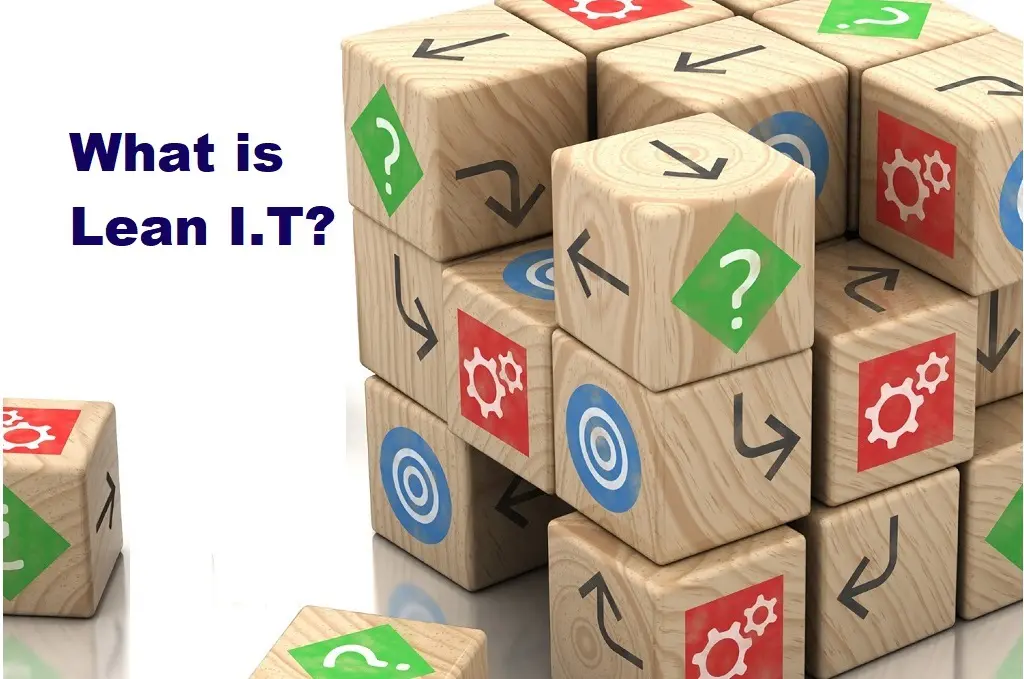What is Lean IT?
After working in an I.T department for many years I have recognised that continuous improvement is the key to the success of a team. Minor changes that focus on customer improvement is considered a better practice. The concept of Lean seeks to make small, incremental changes in processes to improve speed, efficiency and quality of the product or service delivered to customers. It’s not a quick fix. It’s a long-term approach; a philosophy for continuous improvement. Lean I.T focuses on increasing customer value, the elimination of waste and optimising operations whilst implementing strategies for continuous improvement.
In addition to reducing wastes and improving a specific process, Lean I.T is also about building a culture, one that respects all employees and enables them to pursue opportunities to improve their work and share ideas for continuous improvement.
Benefits of Lean I.T
Lean thinking can provide the following list of benefits
- More efficient I.T and Business processes
- Reduce waste
- Reducing errors or defects in work processes
- Reducing costs
- Improving flow of the process
- Simplifying complex processes
- Reducing lead time
- Better project visibility at the team level
- Increased team productivity
- Reduced lead time and delivery
- Improved visibility to stakeholders
- Improving employee morale
- Predictable delivery of customer value
- Increased customer satisfaction
- Safer work environment
Lean I.T Principles
The principal focus of Lean IT is problem solving for the primary purpose of delivering value to the customer, achieved by the systematic elimination of waste throughout the value stream. A five-step thought process for implementing lean thinking refers to following principles
Identify Value-Streams
In IT, value streams are the IT services provided by the IT and the value these services provide the organisation. To understand what value is, consider the end product of your efforts and what your customer gets from it. By definition, value is everything that your customer is paying you for. Given Lean IT’s objective of reducing waste, most I.T departments are actually an overhead to the organisation and can be referred to as waste. In this way, IT services are tributaries that feed and nourish the primary business service value streams. If an IT service is not contributing value to a business service, it is a source of waste. Such waste is typically exposed by value-stream mapping.
Value-Stream Mapping
Value stream mapping is a lean technique to identify waste and remove them efficiently. After you’ve identified the value that your team produces, it is important to visualise its path to the customer. You will need to identify all the steps in the value stream for each product family, eliminating whenever possible those steps that do not create value. When mapping your value stream for the first time, you should focus on value-adding steps. Be sure to correct it occasionally as your process evolves.
Create Flow
In Lean management, flow is a key concept. Since any kind of waiting is a waste, when creating a flow of value, your goal is to ensure smooth project delivery from the early stages to the moment when you deliver it to the customer.
A focus on flow may bring benefits that would be otherwise missed. For example, a software development team may produce code in a language familiar to its members and which is optimal for the team. But if that language lacks an API standard by which business partners may access the code, this will increase workload and cause a bottleneck in the flow and expose this otherwise hidden source of waste.
Pull/demand System
Pull (also known as demand) systems are themselves closely related to the aforementioned flow concept. The idea is simple, start new work only when there is a demand for it and your team has spare capacity. Your goal should be to produce value that is actually needed by your customer and avoid overproduction.
In a pull system, a pull is a service request. The initial request is from the customer or consumer of the product or service. Push systems differ markedly. Unlike the “bottom-up,” demand-driven, pull systems, they are “top-down,” supply-driven systems whereby the supplier plans or estimates demand. Push systems typically accumulate large inventory stockpiles in anticipation of customer need. In IT, push systems often introduce waste through an over-abundance of “just-in-case” inventory, incorrect product or service configuration, version control problems, and incipient quality issues.
Seek Perfection
This Lean principle is closely related to the concept of continuous improvement, which is an integral part of Lean management. Your goal is to constantly improve every process in your team by focusing on enhancing the activities that generate the most value for your customer while removing as many waste activities as possible.
Summary
Lean brings common language to IT and business. It is actually quite common to meet CIOs, CFOs or middle managers from different industries being familiar and using Lean terminology and principles.
By applying principles borrowed from lean manufacturing the IT industry has embraced a new way of working. This lean method focuses on reducing waste through the elimination of work that adds no value to a service or product. Lean IT aims to instil a continuous improvement mindset within organisations. This is done striving to understand customer value, the processes that deliver that value and the needed attitude to achieve that value.

